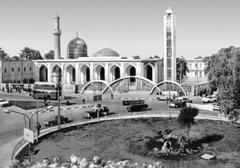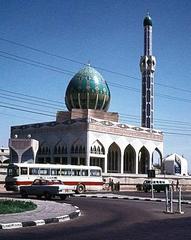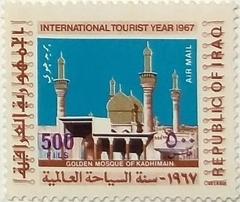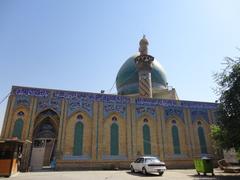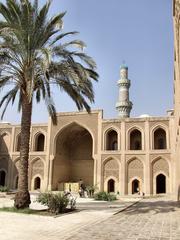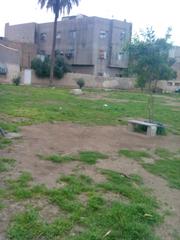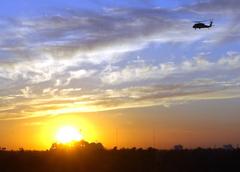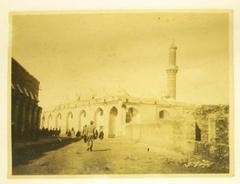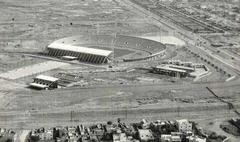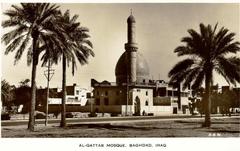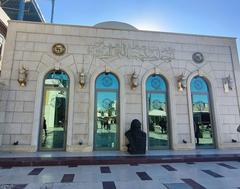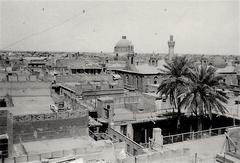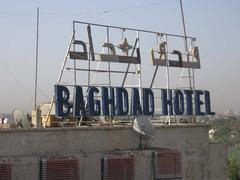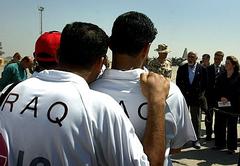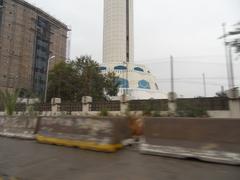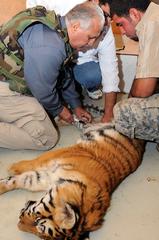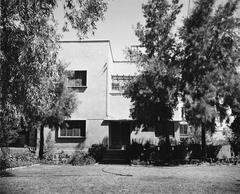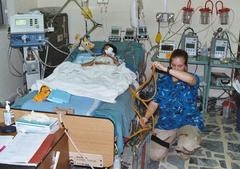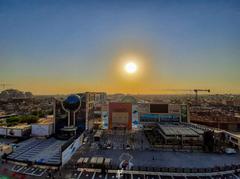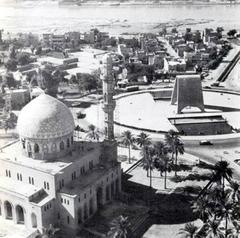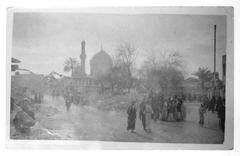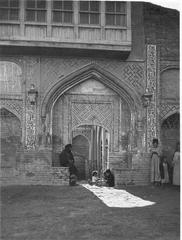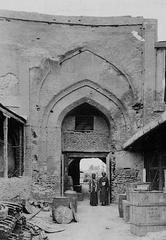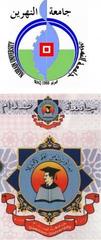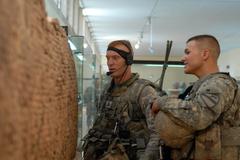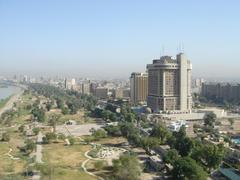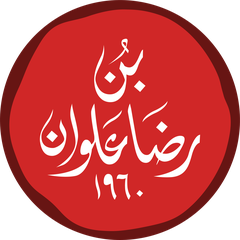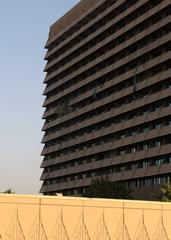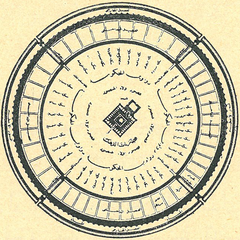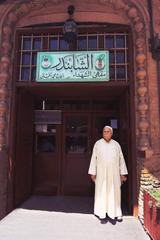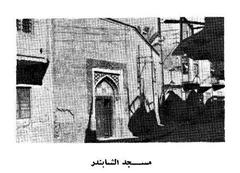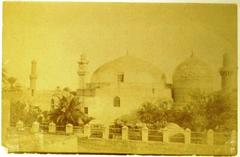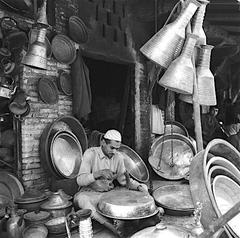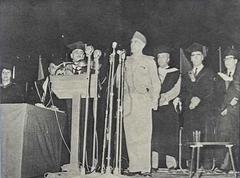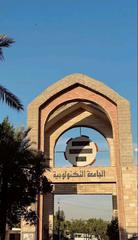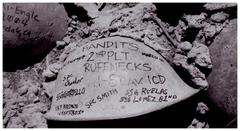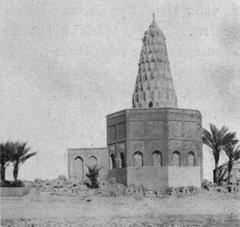Adila Khatun Mosque: Visiting Hours, Tickets, and Comprehensive Travel Guide (Baghdad, 2025)
Date: 14/06/2025
Introduction
The Adila Khatun Mosque is a distinguished landmark in Baghdad, celebrated for its rich Islamic heritage, architectural grandeur, and enduring role in the city’s religious and cultural life. Commissioned during the late Ottoman period by the philanthropic Adila Khatun, the mosque exemplifies a harmonious blend of Ottoman and Iraqi styles while reflecting the significant role of women in Baghdad’s history. Today, it serves both as a place of worship and a vibrant community center, welcoming visitors from around the world.
Whether you’re seeking spiritual reflection, architectural admiration, or insight into Baghdad’s layered past, this guide provides all the essential information—ranging from visiting hours and tickets to historical context, architectural features, accessibility, and nearby attractions. For further planning, consult resources like the Baghdad Tourism Board, Archiqoo, and Iraq Travel Tales.
Table of Contents
- Introduction
- Historical Overview and Patronage
- Architectural and Artistic Significance
- Religious, Social, and Cultural Roles
- Visitor Information
- Preservation Challenges and Recent Developments
- Nearby Baghdad Historical Sites
- FAQs
- Visual and Media Suggestions
- Resources and External Links
- Conclusion
Historical Overview and Patronage
Origins and Construction
The Adila Khatun Mosque was established in the late 19th century, funded by Adila Khatun, a prominent female benefactor. Her charitable contribution enabled the creation of a religious and communal hub that reflected the civic engagement of Baghdad’s elites during the Ottoman era. The mosque was designed to serve the city’s growing population and stands as a lasting symbol of women’s influence in Baghdad’s social and religious history (Archiqoo; Iraq Travel Tales).
Historical Context
Baghdad during the Ottoman period was a thriving administrative and commercial center, characterized by frequent public works and religious endowments. The establishment of the mosque by Adila Khatun demonstrates the vital community-building efforts led by both male and female patrons of the time.
Architectural and Artistic Significance
Exterior and Interior Features
- Dome and Minaret: The mosque boasts a large central dome and a slender minaret, both adorned with fine Ottoman and Iraqi motifs. The minaret remains a city landmark.
- Tilework and Calligraphy: The prayer hall is decorated with intricate tilework in blue, green, and gold, alongside exquisite Quranic calligraphy and geometric patterns.
- Carved Woodwork & Glass: Finely carved wooden doors and stained glass windows enhance the mosque’s sense of tranquility and artistry.
- Mihrab and Minbar: These focal points are embellished with arabesques and floral motifs, showcasing the peak of Ottoman-era craftsmanship.
Artistic Legacy
The mosque is celebrated for its blend of regional and Ottoman design, with features such as muqarnas vaulting and detailed brickwork. Restoration projects have aimed to preserve these artistic elements for future generations (The Art Newspaper; Artnet News).
Religious, Social, and Cultural Roles
Spiritual Significance
The mosque is a hub for daily prayers, Friday congregations, and Islamic festivals such as Eid al-Fitr and Eid al-Adha. During Ramadan, it hosts communal iftar gatherings and Taraweeh prayers, drawing large numbers of worshippers.
Community Engagement
Beyond its religious function, the mosque supports:
- Educational Programs: Quranic studies, Arabic lessons, and Islamic jurisprudence for all ages.
- Charitable Initiatives: Food distribution, support for orphans, and health awareness campaigns.
- Interfaith Activities: Open days, interfaith prayer gatherings, and participation in city-wide peace initiatives, fostering dialogue and social cohesion.
Inclusivity
The mosque offers dedicated prayer spaces and study groups for women, as well as ramps and accessible facilities for individuals with disabilities.
Visitor Information
Visiting Hours & Entrance
- Daily Access: Open from 8:00 AM to 6:00 PM. During Ramadan and other festivals, hours may be extended for special prayers and community events.
- Admission: Free to all visitors. Donations for maintenance and preservation are appreciated.
Accessibility & Amenities
- Location: Centrally situated in Baghdad’s al-Rusafa district, near the al-Sarafiya Bridge and major landmarks such as the Iraq National Library and Archive.
- Access: Reachable by car, taxi, or public transport. The site offers ramps and accessible restrooms.
- Facilities: Spacious prayer halls, separate ablution areas for men and women, basic public restrooms (bring tissues and sanitizer).
Dress Code & Visitor Etiquette
- Dress Modestly: Men should wear long trousers and sleeved shirts; women are asked to wear long skirts or trousers, sleeved tops, and a headscarf.
- Shoes: Remove before entering prayer areas.
- Photography: Allowed in designated areas; always ask permission when photographing people or during prayers.
- Behavior: Maintain quiet, avoid eating/drinking inside, and follow staff guidance.
Safety & Security
- Security Measures: Visible patrols and checkpoints ensure visitor safety in central Baghdad.
- Travel Advisories: Check current advisories before your visit and consider joining guided or group tours, especially if unfamiliar with the area.
Guided Tours
- Arrangements: Tours can be booked via local agencies or directly with mosque staff. These tours offer valuable insights into the mosque’s history and cultural role.
Travel Tips
- Best Times: Mid-morning to early afternoon on weekdays for a quieter experience; avoid Friday midday prayers.
- Weather: Summers are hot and dry; dress accordingly while maintaining modesty.
- Nearby Amenities: Cafés and shops are available in the Doctors’ Quarter.
Preservation Challenges and Recent Developments
The Adila Khatun Mosque has faced various challenges, including damage during the 2003 conflict and recent controversial restoration efforts—such as the application of white plaster over historic brickwork, which has attracted international criticism from heritage experts (The Art Newspaper; Artnet News). Ongoing urban development, including a nearby highway, further threatens the structure’s integrity. Preservation initiatives are supported by local and international organizations aiming to safeguard the mosque’s legacy for future generations.
Nearby Baghdad Historical Sites
Enhance your visit by exploring nearby attractions such as:
- Al-Mustansiriya Madrasa: A medieval educational institution.
- Abbasid Palace Ruins: Remnants of the Abbasid era.
- Baghdadi Museum and Al-Mutanabbi Street: For literature and local culture.
- Iraq National Library and Archive: A repository of the nation’s history.
(Spirit Travelers; Over Your Place)
Frequently Asked Questions (FAQs)
Q: What are the visiting hours of the Adila Khatun Mosque?
A: Daily from 8:00 AM to 6:00 PM, with possible variations during religious holidays.
Q: Is there an entrance fee?
A: No, entry is free; donations for upkeep are appreciated.
Q: Are guided tours available?
A: Yes, through mosque staff or local agencies. Booking in advance is recommended.
Q: Is the mosque accessible to people with disabilities?
A: Yes, with ramps and accessible restrooms.
Q: Can non-Muslims visit?
A: Yes, outside of prayer times and with respect for mosque rules.
Q: Is photography permitted?
A: In designated areas and with permission, particularly during worship.
Visual and Media Suggestions
- Exterior: High-resolution images of the mosque’s dome and minaret (alt: “Adila Khatun Mosque central dome and minaret, Baghdad historical site”).
- Interior: Photos of tilework and calligraphy (alt: “Interior tilework and Quranic inscriptions inside Adila Khatun Mosque”).
- Map: Location within Baghdad’s historical district (alt: “Map of Adila Khatun Mosque location among Baghdad historical sites”).
- Virtual Tour: Interactive or video walk-throughs to enhance online engagement.
Resources and External Links
- Archiqoo: Archaeological Sites in Baghdad Governorate
- Iraq Travel Tales: Baghdad Travel Guide
- Official Baghdad Tourism Board
- Spirit Travelers: Visit Baghdad
- Over Your Place: Discovering Baghdad Culture & Traditions
- The Art Newspaper’s Coverage on Heritage Controversy
- Artnet News on Adila Khatun Mosque Restoration
- Trek Zone: Zumurrud Khatun Mosque and Mausoleum
Conclusion
The Adila Khatun Mosque stands as a living testament to Baghdad’s enduring religious devotion, architectural brilliance, and inclusive community spirit. From its Ottoman-era origins as a philanthropic project by Adila Khatun to its current role as a vibrant spiritual and cultural center, the mosque invites visitors to connect with Baghdad’s storied past and dynamic present. With free admission, accessible facilities, and a welcoming atmosphere, it is a must-visit destination for anyone exploring the historical heart of Baghdad.
For additional visitor guidance, cultural tips, and updates on preservation efforts, consider downloading the Audiala app, consulting official tourism resources, and following social media channels dedicated to Baghdad’s heritage sites.
References
- Archiqoo: Archaeological Sites in Baghdad Governorate
- Iraq Travel Tales: Baghdad Travel Guide
- Artnet News on Adila Khatun Mosque Restoration
- The Art Newspaper’s Coverage on Heritage Controversy
- Trek Zone: Zumurrud Khatun Mosque and Mausoleum
- Baghdad Tourism Board
- Spirit Travelers: Visit Baghdad
- Over Your Place: Discovering Baghdad Culture & Traditions
